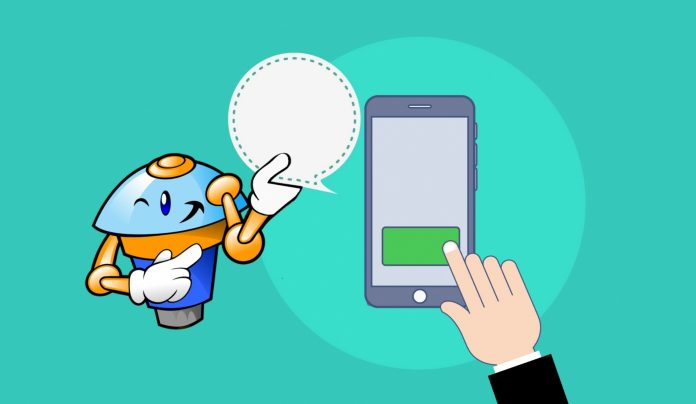Bài nghe và đọc chủ để Education là này là More Colleges Use Chatbots to Communicate Online. Tạm dịch: Ngày càng nhiều trường dùng robot trả lời tự động để giao tiếp trực tiếp. Vậy cụ thể thế nào, xu hướng ra làm sao, mời bạn cùng đọc và nghe bài sau. Bạn cần nắm 3000 từ tiếng Anh quan trọng nhất để đọc cho dễ nhé.
Bài nghe:
Transcript:
Imagine you are about to complete high school and are thinking about attending a college or university.
After doing some research, you find a school you would like to attend, but have questions about the admissions process. So you go to the school’s website in hopes of finding a few answers.
Time goes by and you still do not have the answers. You almost feel like giving up. But then a message appears on your computer or personal electronic device. It says something like: “How can I help?”
Writing back to the website, you try to explain your problem. You possibly get a few questions in response to clarify what your concerns are. Then, almost immediately, the person with whom you are in contact provides the information you are seeking.
Except, you are not actually communicating with a school official. You are not even dealing with a human being. You are in contact with a computer program, or chatbot. It is using artificial intelligence, AI for short, to understand and communicate with you.
This might sound strange. But chances are this would not be the first time you have communicated with a computer program without knowing it. In recent years, chatbots have become a common tool for banks and large companies around the world.
Having human beings available to answer people’s questions and complaints can be costly, requiring many workers. And in most cases, employees can only work a set number of hours in a day, increasing the amount of time customers wait for a response.
So not just companies, but a growing number of colleges and universities have also begun using chatbot technology, says Keith Rajecki. He is with Oracle Higher Education, a computer software company that serves these institutions.
Oracle offers several software tools now in use at hundreds of schools in the United States, the United Arab Emirates and other countries. These tools help with almost everything, from academic record keeping to employee services, and most include a chatbot in their programming.
Rajecki notes that reducing costs and response times is one of the main reasons schools and companies are turning to this technology. However, the goal of many colleges and universities is to find ways to better serve students.
Part of that relates to the fact that the current generation of college students are used to communicating online, said Rajecki. They already talk with their friends and family members through social media messaging service like Facebook and WeChat.
But most importantly, he said, students want support outside of the hours when it is normally available.
“Yes, traditional students are in the class at set hours. But the reality is, a lot of the work that they do and continued interaction with the institution … takes place outside of the classroom, online … day and night,” Rajecki told VOA.
Australia’s University of Adelaide noted major improvements in its service to students after deploying an Oracle chatbot to deal with admissions questions in 2018. It said that students received responses 13 times faster, and students’ approval of the quality of service increased by 60 percent
Now Oracle is offering one program for all areas of support services that colleges or universities provide to their students and employees. This includes a chatbot that can do everything from helping students register for classes to helping professors request time off.
Oracle is not the only company working on this kind of technology. Businesses like AdmitHub and Ivy.ai are involved in similar efforts. Several schools have also created their own systems.
Western Governors University, or WGU, operates completely online, meaning it has no actual grounds or physical campus. In 2018, the school’s non-profit research agency, WGU Labs, received a $750,000 award from the National Science Foundation to experiment with a new kind of chatbot.
“We’re not trying to create a bot that answers simple questions … or anything like that,” said Jason Leven, the executive director of WGU Labs. “We’re really trying to create an agent that can help … decision making for students.”
Like Oracle, WGU’s chatbot software will use machine learning to study past interactions between students and other chatbots, Leven said. This will enable the program’s artificial intelligence to continuously learn and improve its communication skills.
But additionally, he noted, the goal is to collect information about the school’s students. This includes expectations on how much time they can commit to their studies, how long they think a study program should take to complete and what kind of career they want.
Then when a student who is unsure of the program or field of study they are interested in visits the WGU website they can interact with the chatbot. This chatbot can then help the student find the program that best meets their needs. It may even suggest they are too busy to seek higher education at that time, to ensure they do not try and fail, said Levin.
However, not everyone is ready to consider the possibilities this kind of technology presents.
Ian Jacobs is with the market research company Forrester. He suggests that technology like chatbots can work well if it is able to do what users ask of it. Jacobs says the problem is when cost cutting becomes an important reason for deploying the technology. This means schools and companies are more likely to try using chatbots for things they are not yet able to do.
AI programs are not yet able to fully interact in the way humans do, he notes. For one thing, there are hundreds of ways to word even simple requests. When chatbots make mistakes in especially difficult situations, this can result in really problematic user experiences.
“What happens when…a parent dies and the student has to renegotiate financial aid. That is an incredibly emotional experience…You wouldn’t want to automate that…And I think, right now, higher education is not really good at figuring out where human beings need to be involved,” said Jacobs.
I’m Dorothy Gundy.
And I’m Pete Musto.
Pete Musto reported this story for VOA Learning English. George Grow was the editor.
Quiz:
1. What is a major problem with having human customer service representatives?
a. They try to do as little work as they can.
b. They can only work so many hours a day.
c. It is impossible to find people willing to do it.
d. It is very difficult to depend on them.
Answer: b. Having human beings available to answer people’s questions and complaints can be costly, requiring many workers. And in most cases, employees can only work a set number of hours in a day, increasing the amount of time customers wait for a response.
2. What does Rajecki say modern college students want from their school’s support services?
a. To be totally free of cost
b. To be run only by humans
c. To be run only by machines
d. To be available at all times
Answer: d. “Yes, traditional students are in the class at set hours. But the reality is, a lot of the work that they do and continued interaction with the institution … takes place outside of the classroom, online … day and night,” Rajecki told VOA.
3. What information about students is WGU Labs gathering for its chatbot to use in offering advice?
a. How much time they can commit to their studies
b. How long they think a study program should take
c. What kind of career they want after college
d. All of the above
Answer: d. But additionally, he noted, the goal is to collect information about the school’s students. This includes expectations on how much time they can commit to their studies, how long they think a study program should take to complete and what kind of career they want.
4. What does Ian Jacobs say makes it very difficult for current AI technology to fully communicate like a human?
a. There are hundreds of ways to make even simple requests.
b. The artificial intelligence can only communicate in English.
c. The artificial intelligence only operates a set number of hours.
d. There are far too many words in the English language.
Answer: a. AI programs are not yet able to fully interact in the way humans do, he notes. For one thing, there are hundreds of ways to word even simple requests. When chatbots make mistakes in especially difficult situations, this can result in really problematic user experiences.
Words in This Story
response – n. something that is said or written as a reply to something
artificial intelligence – n. the power of a machine to copy intelligent human behavior
complaint(s) – n. a statement that you are unhappy or not satisfied with something
customer(s) – n. someone who buys goods or services from a business
institution(s) – n. an established organization
academic – adj. of or relating to schools and education
interaction – n. the act of talking or doing things with other people
commit – v. to say that someone or something will definitely do something
incredibly – adv. in a way that is very intense
automate – v. to run or operate something, such as a factory or system, by using machines or computers instead of people to do the work
Nguồn: VOA
Tham khảo cách làm chủ IELTS 7.5 từ mức 6.0 trong vòng 20 tuần.














